Angus Energy has announced that Nicolas Pintabona has joined the company as an Account Executive, Hedging. In this role, Pintabona will focus on helping the company leverage hedging opportunities for its current client list as well as expanding Angus Energy’s footprint in the Northeast.

PINTABONA
Pintabona recently earned a Bachelor of Science in Finance & Accounting from Flagler College in St. Augustine, FL. He was an Honoree of Magna Cum Laude, the Lambda Chi Alpha Treasurer, and a member of Flagler’s Student Government Association. While attending college, he was also a Credit Analyst for Veterans Capital Corp., where he reviewed several types of financial data, identified potential risks, and made recommendations regarding lines of credit and capital.
“I am honored to be a contributor within an organization dedicated to helping dealers in multiple areas of their business,” said Pintabona.
Mark Bloom, Chief Marketing & Sales Officer/Partner added, “We are thrilled to have Nick join the Angus Team.”
“We have expanded our services over the past 15 years to include business intelligence (BRITE), delivery efficiency/profitability (GREMLIN and ADEPT) and financial services (Angus Finance).
“Since Phil Baratz first started Angus in 1991 we have always given our clients comprehensive hedging services,” Bloom concluded. “Adding Nick will help us provide hedging advice our clients expect from us.”
The Southern New England Energy Conference recently took place in Newport, Rhode Island, catering to petroleum marketers and industry vendors. During the convention, George Perrelli, Owner & President of F. Perrelli & Sons Fuel in East Haven, Connecticut, was presented with the Fuel Oil Marketer of the Year award. Congratulations!
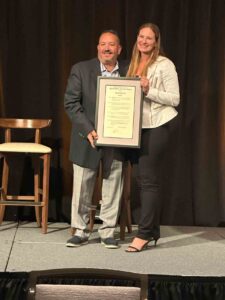
The National Oilheat Research Alliance (NORA) has released the sixth episode of its podcast series, “In the LOOP with NORA.” The podcast series looks at how the liquid fuel heating industry lowers carbon emissions from homes, along with an emphasis on heating system efficiencies and technical education.
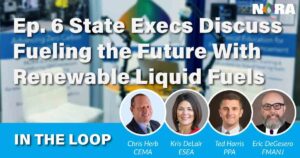 In Episode 6 of “In the LOOP,” four State association leaders share their thoughts on the how their associations, member companies and States are working together to ensure renewable liquid fuels stay prevalent with policy makers as well as how higher blend home heating oil can help improve the consumer experience while helping the environment.
In Episode 6 of “In the LOOP,” four State association leaders share their thoughts on the how their associations, member companies and States are working together to ensure renewable liquid fuels stay prevalent with policy makers as well as how higher blend home heating oil can help improve the consumer experience while helping the environment.
First, Chris Herb, President of the Connecticut Energy Marketers Association, talks about the efforts the State is playing in the transition to low carbon liquid home heating oil.
Next, Kris DeLair, Executive Director of the Empire State Energy Association, shares her thoughts on renewable liquid fuels and how the live-fire demonstration of the combustion from B5 to B100 helps illustrate how seamless higher blends really are.
Then, Ted Harris, Executive VP of the Pennsylvania Petroleum Association, offers his take on why his State is unique compared to other States when it comes to biodiesel standards.
Finally, Eric DeGesero, Executive VP of the New Jersey Fuel Merchants Association, discusses how his State and members of his association are handling the pressures on the industry to transition to a net-zero carbon future.
To listen, go to In the Loop with NORA or NORAweb.org. In the Loop with NORA is also currently available on Apple Podcasts, Google Podcasts. Spotify and Amazon Music.
On September 15, Pennsylvania Petroleum Association Technical Education Center (PPATEC), an arm of the PA Petroleum Association (PPA), held a graduation ceremony for its HVAC & Energy Professional Program. Five new individuals will be making the transition from a student to an employee for the upcoming 2023–2024 heating season.
The September 2023 HVAC & Energy Professional Program graduates include Alex Kreider of Stevens, Benjamin Farber of Annville, Daniel Segundo of Harrisburg, Eric Love of Steelton and Eric Snyder of Hanover. Four out of five graduates were recipients of the Robert V. Boltz Scholarship Foundation.
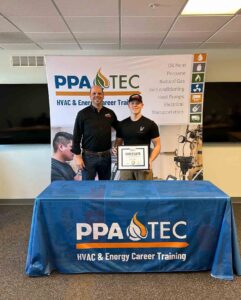
Kreider with Josh Vanderplate of Vertex Mechanical
Alex Kreider is a recent high school graduate of Cocalico School District where he entered into an HVAC co-op with Vertex Mechanical during his senior year. Alex decided to attend PPATEC to receive formalized training and industry specific certifications prior to formally entering the HVAC industry. Alex accepted a job with Vertex Mechanical prior to attending PPATEC and started on the job immediately after graduation.
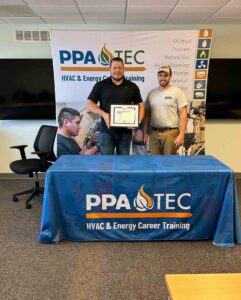
Farber with Trevor Brubaker of Constant Comfort Solutions
Benjamin Farber is a military veteran who was able to offset 100% of PPATEC tuition costs by using his GI Bill Benefits. Benjamin entered PPATEC with no direct employer relationships but was able to interview with multiple companies during the 10-week program. He ultimately decided to accept a position with Constant Comfort Solutions LLC., and started in his new HVAC career soon after graduating.
Daniel Segundo had previously worked two jobs but was in search of better career opportunity in the HVAC/Energy industry. He was ultimately hired by Home Climates, Inc. prior to the start of the July HVAC & Energy Professional Program. Daniel attended the program as an employee of Home Climates and will return to the company with industry specific training and important certifications.
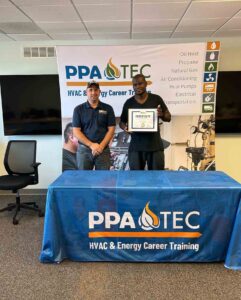
Love with Don Deimier of HB Home Service Team
Eric Love previously had experience in the HVAC field but was most recently working the commercial sanitation industry. Eric was able to utilize PA CareerLink to help sponsor his PPATEC tuition costs and brush up on his HVAC knowledge base. Eric interviewed with multiple employers and ended up accepting an offer with HB Home Service Team.
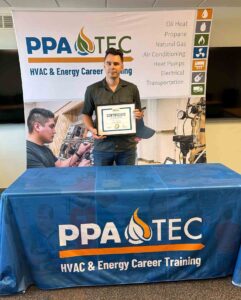
Snyder accepting a position with Suburban Propane
Eric Snyder was working a warehouse job and wanted to make a career change into the HVAC & Energy industry. He interviewed with multiple PPA and PPATEC member companies while attending the HVAC & Energy Professional Program. Eric decided to take a position with Suburban Propane and will start his career as an HVAC field technician in September. Eric will also go on to obtain a CDL through an internal Suburban Propane training program.
PPATEC offers leading hands-on technical training solutions for the HVAC and energy industry. The PPA is a not-for-profit trade association representing 450+ energy stakeholders. PPATEC is a postsecondary entry-level career training institution licensed by the State Board of Private Licensing Schools and is approved by the VA to accept GI Bill benefits.
In 2022, PPATEC launched its HVAC & Energy Professional Program, a 10-week, hands-on curriculum tailored to provide the skills needed to secure a job in the HVAC and energy industry. Since then, graduates of the program have routinely enjoyed multiple employment offers, often graduating on a Friday and going into a new career the following Monday.
According to Ted Harris, PPATEC’s Executive VP, there is a state-wide shortage of more than 2,000 HVAC and energy technicians—jobs with an average annual salary well above $50,000. PPATEC created its entry-level training program to help PPA members fill that pressing need.
“We’re glad to play a role in preparing these—and other—young men and women for family sustaining careers in an in-demand field,” said Harris.
Candidates have multiple opportunities for financial support. Veterans can use GI Bill benefits to defray the cost of the program. PPATEC also routinely offers scholarships to candidates. In addition, PPA members have an opportunity to sponsor a candidate entering the program. To learn more about PPATEC’s program, visit https://ppatec.com/.
The U.S. Department of Agriculture (USDA) is now accepting applications for grants through the Higher Blends Infrastructure Incentive Program (HBIIP) to support investments in biodiesel infrastructure. These grants will cover up to 75% or $5 million of total project costs to help facilities convert to higher-blend fuels. The fuels must be greater than 10% for ethanol and greater than 5% for biodiesel.
 The $450 million in new funds will be available quarterly. Each quarter, $90 million will be available to support a variety of fueling operations:
The $450 million in new funds will be available quarterly. Each quarter, $90 million will be available to support a variety of fueling operations:
• Approximately $67.5 million will be made available to transportation fueling facilities, including fueling stations; convenience stores; larger retail stores that also sell fuel; and transportation, freight, rail and marine fleet facilities.
• Approximately $18 million will be available to fuel distribution facilities, including terminal operations, depots and midstream operations.
• Up to $4.5 million will be made available to home heating oil distribution facilities.
There will be five application windows for HBIIP between July 1, 2023, and Sept. 30, 2024. A sixth application window will be opened if funding has not been exhausted.
For more information, visit the HBIIP webpage, the Federal Register or Grants.gov.
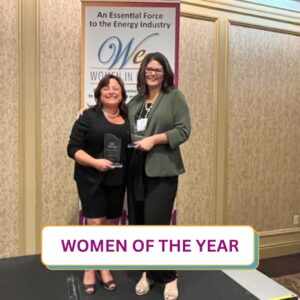
Elaine Levin (left) Kris DeLair (right)


Pictured with Liz Hill

Pictured with Liz Hill

Arisa Chue
Dr. Frank: I received my Ph.D. from the State University of New York, College of Environmental Science & Forestry. I studied different types of renewable energy technologies and pathways. I focused on different biomass-based pathways, such as bio-heat, biodiesel, solar photovoltaics, and wind-based pathways, to really understanding the technical and financial viability of deploying different types of resources.
ICM: What drew you to this field in the first place, and then to pursue a Ph.D.?
Dr. Frank: I always really wanted to help the environment. As just one person, I thought, “How can I have the biggest impact?” I am someone who, when I start something, I’m going to finish it. I really wanted to help others, as well. Therefore, my interest in the environment, in different types of energy, paired with a desire to help students, is what got me interested in becoming a professor of renewable energy.
ICM: Can you tell me more about your particular area of study—the economic and technical viability of these new technologies?
Dr. Frank: Much of my research focuses on a methodology called techno-economic analysis. Simply put, my research focuses on the technical and financial impacts of diverse renewable energy technologies and fuels. This is done to analyze their long-term impacts from an environmental and financial perspective.
ICM: Is this real-world viability or just the academic exercise of studying?
Dr. Frank: The studies that I do aren’t just theoretical. We’re looking at real-world data and projections, as well as historical data from past energy consumption.
ICM: How did you narrow your focus down to heating from the broad-based studies of environmental science and forestry?
Dr. Frank: Among the different types of studies I worked on, one was a heating analysis. We looked at several different pathways to understand the greenhouse gas emissions from each and whether they are affordable to deploy. We looked at air source heat pumps, natural gas, bioheat (a biomass blend), and then a baseline pathway looking at ULSD, your typical heating oil. That sparked my interest because I didn’t realize until I performed that study how beneficial using a bioheat blend could be, not only from a financial perspective but also from a greenhouse gas emissions perspective when we’re discussing emissions reductions.
ICM: Who commissioned that study?
Dr. Frank: It was part of my Ph.D. dissertation, in collaboration with my advising professor and industry experts, who also authored this study. I had been thinking, “Okay, what would be the advantages of using a fuel such as biodiesel?”
ICM: What did you find in that study?
Dr. Frank: We found that, when compared to alternative pathways, such as ULSD, as well as natural gas, the biomass-based fuel (biodiesel) has the advantage in terms of greenhouse gas emissions reductions and also from a financial viability standpoint. This was a New York-based study; of course, depending on where you do the study, the results may differ depending on the data you utilize, such as fuel type and other inputs.
From a greenhouse gas standpoint, in terms of greatest reductions from the ULSD baseline, we found that the air source heat pump had the greatest reductions, and that was followed by the biodiesel blend. However, when it comes to financial viability, we found that the biodiesel blend was favorable.
This study is currently published in a peer-reviewed journal. If anyone has any questions, please feel free to contact me at jfrank@noraweb.org
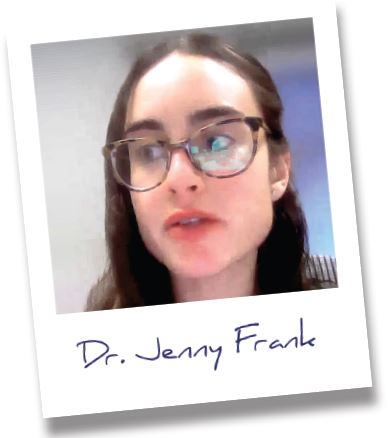
ICM: You did some work with the National Biodiesel Board, now Clean Fuels Alliance America. I understand that they have a program to support young scientists in the low carbon fuels field.
Dr. Frank: That is a wonderful program called Next Generation Scientists for Biodiesel that really helps educate young scientists/students, whether undergrad or graduate, who are interested in learning about biomass-based fuels. The program introduced me to an entire network of different professionals in the field, helped me get to conferences, supported me through participation in different research seminars and research talks in areas that I would never have thought of as a graduate.
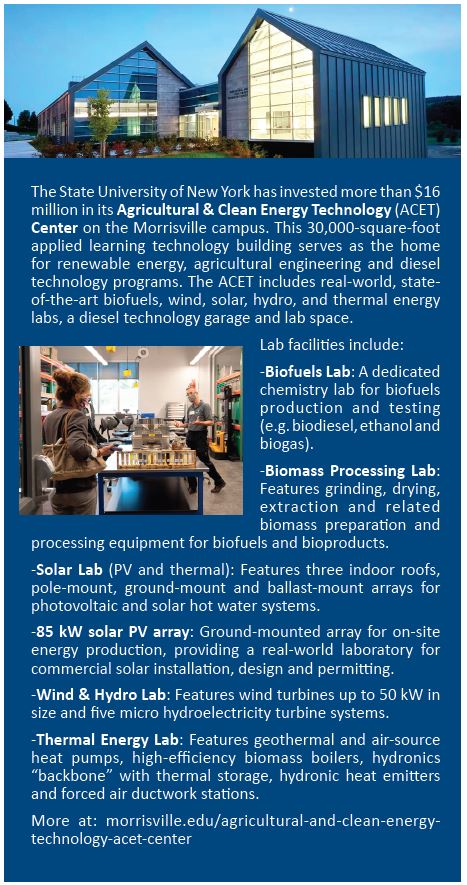
ICM: Is this an interactive program with continuing education?
Dr. Frank: Yes. I was the co-chair for some time, and I helped other students in the program, as well. It was a wonderful experience. I hope that, in the future, we can establish a similar program, because it really helped spark my interest in the field. It also helped me in terms of my career prospects.
ICM: You’re now a research associate with NORA, as well as an assistant professor at SUNY, Morrisville. How did you get on NORA’s radar or how did NORA get on yours?
Dr. Frank: NORA had read some of my research.
ICM: You have been working with NORA since the Spring of this year. Were you surprised at anything you saw there?
Dr. Frank: I didn’t realize, at first, that NORA had the Net Zero Carbon Home initiative. When I learned more, I thought what it was doing was amazing. Now, it is one of the projects I am working on, and we have written a study that we hope to get published this year. It proves that that when we utilize solar photovoltaics in combination with B100 (ASTM 6751 biodiesel) fuels, we can achieve a net zero carbon home. It’s great that we can practice what we preach.
ICM: Sounds like that was a pleasant surprise. From your perspective, what challenges are you seeing that the industry is going to have to address?
Dr. Frank: I think that there is this mentality that we can’t move towards both electrification and biomass-based fuels. It must be one or the other. It’s a fact that both electrification and biomass-based fuels both can help us decarbonize, whether it’s at the Federal level, the State level or more of a local level. I think the challenge is this mentality, this mindset, that it’s either/or, not both as it really should be. We should all be working towards a common solution, which is reducing our greenhouse gas emissions through decarbonization.
ICM: Do you see the movement to low-carbon biomass-based fuels happening?
Dr. Frank: I’m seeing the education happen. I think a lot more needs to happen in terms of actually getting people to adopt low-carbon fuels, but I think it is happening.
ICM: Look down the road, five or 10 years, do you personally have a vision for renewable liquid fuels in homes? I know you are “twentysomething” and I don’t like classifying people by generation, but there can be differences in attitudes, perceptions and vision. What’s your vision?
Dr. Frank: If we can educate more homeowners on the benefits of utilizing Bioheat®—that it reduces carbon emissions and our carbon footprint—and have them understand that this is an affordable solution that is available now and clearly works from a technical perspective, I think that we can really expand and get homeowners, especially in my generation, to adopt this fuel. However, education is really important.
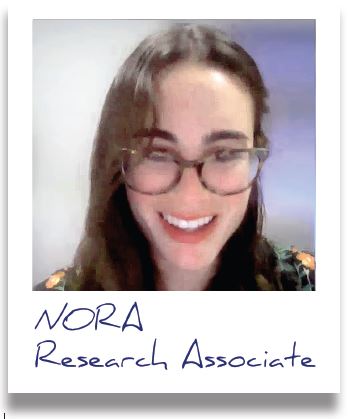
ICM: The liquid heating fuels industry’s position is that by using low carbon fuels, greenhouse gas reductions can begin immediately. Has your research looked at that?
Dr. Frank: The time value of carbon was very important throughout my dissertation in terms of reducing our emissions now versus waiting for different technologies to be more affordable and commercial. Biofuels are commercially available now, we can access them, they’re affordable—why wouldn’t we currently want to reduce our emissions? Actually, a few of my studies looked at that—understanding what the monetary value of reducing our emissions is now, as well as considering what the reductions in greenhouse gas emissions are when we reduce now versus waiting five years.
ICM: Do five or ten years really make a difference in greenhouse gas emissions?
Dr. Frank: Yes, at least in the literature that I’ve reviewed and in the studies that I’ve conducted. Yes, it does make a huge difference. I think we need to realize that and act on the notion that we can reduce our emissions today. Why wouldn’t we if we are capable?
ICM: Back to your twentysomething status, your friends are probably of similar age and similar sensibilities, and they might be very conscious about environmental issues. What do you tell them about your working in the heating oil industry? What’s that story for your generation?
Dr. Frank: Most of my peers and colleagues make decisions based on their values; many in my generation act in a way that’s environmentally conscious and sustainable. We really do think about future generations. I tell them that a lot of the work that I’ve done—my Ph.D., dissertation and master’s degree—all focuses on reducing emissions and fostering sustainability. If you don’t believe the industries themselves, at least believe the science. Believe the facts in the peer-reviewed literature as well as my studies, and other studies that I’ve read, that support the fact that biofuels can reduce greenhouse gas emissions. There are alternatives, and this is one alternative that we can implement today. That’s what I tell a lot of my friends when they ask me about what I’ve done and what I’m doing.
I also talk to them about what I teach in my college classes. I teach the facts about different energy technologies and different fuels, and I have a whole unit of biomass-based fuels and technologies. I show them graphs and charts about emissions. It’s not just me working for a company that wants to promote its product; that’s not what I’m doing. I’m teaching students about the facts of energy technologies and energy policies; that’s what I’m trying to do at NORA as well, educate people about different types of fuels and different alternatives that are more sustainable than conventional fuels.
The more I inform students of this, the more they understand, “Oh, this can be part of the solution to our energy crisis.” Maybe when they’re buying a home or when their parents, grandparents or friends are looking at different alternatives, they will think about the information, the facts that I have seen through my research. If people understand the facts, and what is happening, whether it’s in the industry or in the literature, they can then make decisions based on the information and the data, and not just on what they’ve heard or on the opinions of others. ICM
Professional development and continuing education are critical in many careers, particularly those in which science, technology, laws and regulations are constantly changing. Take the medical field, for example. Imagine going to a doctor’s appointment to address your chronic headaches and the physician wants to drill a hole in your head—or consider your therapist scheduling a lobotomy because you have obsessive-compulsive disorder (OCD). Those procedures were considered “state-of-the-art” at one time. While these examples are extreme, they illustrate just how important it is for those in the medical field to stay current with the latest techniques—not just because newer methods may be better and safer, but also because the old ways might simply be bad or dangerous.
Another industry positioned at the crossroads of ever-changing science, technology, laws and regulations is heating oil. Legislators are trying to regulate this business out of existence unless the sector can significantly clean up its act and reduce carbon emissions. The science and technology of Bioheat® fuel and more efficient biofuel-compatible equipment offer a solution to preserve the legacy of the thousands of local heating oil companies in this field, many of which are family-owned, generational businesses. Transforming this technology into concrete action, however, requires education, a willingness to learn and desire to—or better put, no fear of—change.

Despite numerous in-person events, tradeshows, webinars, websites and training materials offered throughout the year by folks like me and others with Clean Fuels Alliance America, the National Oilheat Research Alliance (NORA) and a variety of trade associations, there appears to be room for improvement in how we engage this industry’s workforce and businessowners to take advantage of these professional development opportunities. Following a recent customer service representative (CSR) boot camp hosted by NORA and Clean Fuels, an attendee wrote to provide a fair and balanced critique of the event. One of his observations was something I have wondered for decades—“I don’t know why more companies don’t send their people to a free event that will help their business.”
Long before Clean Fuels devoted millions of dollars to educate fuel dealers and their employees, commercial entities, including burner manufacturers, supply houses, State heating oil associations, NORA, Oil & Energy Service Professionals and others, committed to host and educate thousands of supply-chain participants, often free of charge or at a value commensurate with the level of education being offered. For educational events I am involved with, I spend weeks (and sometimes months) preparing comprehensive presentations about biodiesel and how it can be used to blend down the carbon in distillate fuel—a subject that was truly never discussed or understood before, and one that certainly needed explaining to earn the confidence of the industry contemplating this much-needed transition to low-carbon fuels.
On one occasion, my wife joined me at the event. She sat in the back of a room staged for 150 interested parties eager to improve their knowledge in hopes they could go back to their companies and begin to build home heating—21st-Century style. Unfortunately, only about 16 individuals joined me that day, scattered across the room with countless seats between them. For the record, at least six of those attendees were friends and close business associates, so basically it was a bust. After the presentation, in which I committed the same level of energy as though the room was packed, my wife asked me, “Where was everyone?” and “Why don’t those roaming the halls come in to learn?” I had no answer. Honestly, I still do not.
What I do know is that these all-too-frequent situations have been the norm. I call them “lost opportunities.” Who’s the loser? Well, those wandering the halls for starters, along with their employers, families, customers and the industry at large. One could easily argue that the ripple effect goes well beyond that, affecting soybean farmers, rural communities, and in some small but important measure, the environment itself.
Who’s winning? The competition, for sure. Utilities are banded together, emboldened with capital to share positive imagery and stories with customers looking for an energy source free of headaches while delivering optimum home comfort. These well-structured, well-capitalized utilities require employee participation in professional development training and continuing education classes to strengthen their knowledge, which then gets shared with their customers.
While preparing for this summer’s XBX Exploring Biodiesel seminars in Massachusetts and Connecticut, NORA and Clean Fuels organizers invested countless hours over months developing comprehensive subject matter that would make good CSRs even better through teaching them the core messaging that defines Bioheat® fuel: energy diversity, operational excellence, consumers’ right to choose and no transition costs. The courses offer deep dives into understanding consumer behaviors and constructing story boards that, when put into high gear, build confidence and trust with the consumer. These events give attendees insight that they can take back and use immediately. All this preparation was met with a reasonable attendance; however, one could argue that 85 CSRs is certainly not a strong cross section of the Massachusetts marketplace.
Considering the number of full-serve and call-on-demand (COD) fuel dealers, as well as equipment-service providers, suggesting that at least two people from each company attend the event should fill the room with hundreds of people. We wondered whether the lower-than-expected attendance was because of the heat and humidity that week or maybe because July is beach, boating and surfing time. Was it the COVID-19 pandemic that led to the reasonable, but sparse, attendance?
Policy leadership certainly doesn’t waiver or use the above excuses as it continues to work diligently to abolish combustion in favor of its preferred energy source (heating oil need not apply for that moniker).
Is this industry done learning? I hope not. Has it reached the pinnacle of being a total, perfected energy package? I think not. Is our product stale and stagnant? With increasing blends of Bioheat® fuel, surely not.
What makes the heating-oil industry and its acceptance of Bioheat® fuel—or in some cases the lack thereof—special is that, unlike Big Oil where decisions are made at the top, we’ve got thousands of individual and oftentimes family-owned businesses making decisions that cumulatively affect their industry in ways they probably couldn’t have foreseen. This entails a lot of different attitudes, thought processes and brains at play, none of which think alike. However, the good—or bad—actions of a few companies can have a profound influence. I’ll give examples of what I mean.
Take a well-known New England energy company that, many years ago, saw what I see today—market erosion. Then, however, the fuels eating into heating oil’s market share were natural gas and propane, whereas today, that energy source is electricity. This particular company saw evident erosion and, with foresight, decided to establish a position in propane to be prepared to sell this fuel option to its existing account base. To maximize its diversification, the company transported crude by rail and excelled in railing shale oil back East to refine and sell to its customers.
Another example is my own company, Advanced Fuel Solutions. As biodiesel became more popular, we saw decreased lubricity-additive sales and adjusted by assessing and investing in new markets to offset our losses. I saw that biodiesel was the future, so we encouraged our upstream collaborators to set out to develop effective, modern chemistries that would address potential needs on that side of the equation. A very recent example of this is the cold-flow improver we pioneered with Clean Fuels, NORA, Clariant and Innospec to reduce the pour-point temperature of B50 blends.
I’m not a mad scientist, but with 40 years of experience, I know how to adapt, evolve and grow businesses. I would like to think these two examples of individual companies making good decisions could positively influence others to do the same—to learn, adapt and change for the better.
On the flipside, bad actions by a few companies can also negatively influence others in ways that are counterproductive to change and can only be curbed through professional development and continuing education. All it takes is one misinformed technician on midnight service calls telling customers that biodiesel is bad for their systems, and that they should find a dealer who doesn’t sell “that stuff,” to initiate the domino effect. This is why we need to get the entire supply chain in lock step, from CEOs to service technicians.
In the end, it doesn’t make a difference where you are in the supply chain or how much revenue you bring in; you can either stand static on the ground while the world around you keeps moving and respond reactively, or you can recognize your disadvantages, empower yourself and channel energies to increase productivity, revenue and good will.
Experience tells us that many believe there is no reason for improvement—legislators count us out, technology and the fuel we have used for decades is good enough to get by and, honestly, some in this space are just too busy to pause for improvement.
How can all this education be out there and very few take advantage of it? Whatever the reason—and frankly none justifies avoiding educating ourselves—we all need to move toward better utilization of the many programs offered by NORA, Clean Fuels, equipment manufacturers, vendors, and everyone and anyone willing to share knowledge. Good parents don’t let their kids skip class, so why should good business owners let their employees miss these educational opportunities that stand to benefit the company, its employees and its customers? Just grab the chance. The decision will be valued once you begin moving your company to low-carbon liquid fuels. ICM
Safety inspections are a propane industry best practice that marketers utilize to maintain customer safety and reduce liability. If you are a propane marketer, it’s likely that you’re completing safety inspections of propane systems regularly for new customers, move-in and move-out scenarios, and systems that have been modified.
Something that marketers reviewing this process have often wondered is, “How can I create a more efficient process that will lead to time savings for my team? How can we ultimately produce more accurate and complete documentation that will help protect the company?” Today, I’m here to answer that question.
The Impact of Safety Inspections on Your Propane Business
It’s a fact of our industry that field technicians don’t love paperwork. On any given day they could conduct multiple safety inspections, which may not sound like a lot until you consider that just one safety inspection form has 50 fields to complete. This paper-driven process is detrimental to your company’s overall efficiency. After a safety inspection is completed, a paper copy is usually returned to the office where it gets filed with some information and put into back-office software.
Paper safety inspections are significantly more time-consuming for every department involved. Technicians in the field must complete forms for every inspection by hand, then these forms are manually stored in filing cabinets or back-office software by the office team. Using paper forms also makes it difficult for service managers to quickly review the inspections for errors, omissions or follow-ups.
It should come as no surprise, then, that errors happen. It takes a lot of time and effort to maintain a consistent safety inspection process. Technicians must be trained on how to complete the inspections and the forms, and office staff members need to be able to review the paper forms and input the data. Inevitably, the process yields a significant margin for error. Without a process in place to provide real-time feedback on errors that technicians are making, those errors could potentially be made in perpetuity. How, then, can propane marketers maintain this important Industry best practice without sacrificing efficiency or accuracy? One solution is to transition from a paper-driven safety inspection process to a mobile one.
Mobile Safety Inspections Dramatically Increase Efficiency
Mobile safety inspections come with a number of benefits. These include, but are not limited to:
• They’re completed on tablets, instead of by hand on paper.
• They utilize intuitive prompts and form field options to eliminate factors like illegible handwriting or missed form fields to create 100% accurate and complete safety inspections.
• They save time for technicians in the field by automatically sending a completed copy of the mobile safety inspection form to the customer, and another is sent and stored in an electronic database.
• Some platforms can automatically generate management reports, which can help identify important follow-ups and technician performance.
• They offer a unique opportunity to provide feedback right away, proactively correct any errors and prevent recurring issues.
Consider Your Company’s Current Inspection & Documentation Process
A major shift must take place to transition from a paper-driven safety inspection process to a mobile one, so it is important to make sure you are utilizing the best available technology formulated by propane safety experts. While there may be a lot of electronic systems available, not all of them are equipped to store, retrieve and analyze safety inspection data and other compliance documentation.
When you start looking for electronic safety documentation software, consider these questions:
• Can my current back-office software evaluate operating tests?
• Can field technicians use the mobile application service offline, without cellular data or Wi-Fi?
• Can I use the system to analyze critical operating tests, such as leak checks, pressure tests and flow and lock-up tests?
• Can the system report on regulator replacements and cathodic protection inspections?
Now is the best time to transition from paper to mobile to eliminate documentation errors, save time, increase efficiency and reduce risk for your propane company. ICM
Alex Burns is Vice President of the P3 Compliance System division of P3 Propane Safety. You can reach her at Alex_Burns@p3propanesafety.com or p3propane.com.
State regulators are quickly approaching a fork in the road when it comes to developing Clean Heat Standards (CHS) and compliance markets. They will either choose program guidelines that are designed only to incentivize the electrification of buildings, or they will choose program guidelines that are designed to reduce carbon emissions from the thermal sector from all technologies.
Let’s take a look at what’s happening right now in Massachusetts. The Department of Environmental Protection (DEP) has indicated that its CHS is designed based on the California Low Carbon Fuel Standard (LCFS). However, there are many differences between these two programs. One example is that the LCFS treats all emissions reductions equally; each ton of carbon dioxide reduced is worth one credit regardless of the energy source. The Massachusetts DEP indicated during its Aug. 15 public hearing that it is leaning towards a “yard stick” method that would assign the value of one credit as the equivalent of one electrified home. While the stated goal of the CHS is to reduce emissions from the thermal sector, the adoption of this “yard stick” method to value credits would indicate that the actual goal of the CHS is to electrify all buildings in Massachusetts, not maximize greenhouse gas reductions.
Digging a bit deeper into the suggested program guidelines, we find that in the Massachusetts CHS’s first discussion document published a few months ago, the DEP suggested a mandate that all heating fuel suppliers convert 3% of their customer base annually to Air Source Heat Pumps (ASHP) or face a large fine. In this scenario, whether the customer wants to switch to heat pumps or not is irrelevant. The DEP has also considered treating electricity as carbon-neutral. The fuel used to power our electric grid would be irrelevant and all electricity would be considered to be renewable—despite the reality that more than half of winter electric generation would continue to come from natural gas. To cap things off, heating fuel suppliers would be required to either reduce the carbon intensity of their fuel or lower their sales by 29% in 2025 and by 49% in 2030. There would be no time built in for capital investment or to effect a transition as was afforded to the power and transportation sectors.
The problems with these kinds of program guidelines are myriad. Tracking fuel from out of State, regulating out-of-State entities, accurately carbon-scoring each fuel and a large compliance obligation in year one are just a few problems that come to mind. Let’s not forget to mention the harm brought to the end-user or consumer, who will bear the financial burden of these programs and be stripped of the ability to choose how best to heat and cool their home.
It is absolutely a possibility that these guidelines will be written into the CHS in Massachusetts. However, this story is far from over. DES—along with other stakeholders—has been heavily engaged in the process. It is critical that our industry continues to shine a light on the deeply negative outcomes that may result from these guidelines. Only then can we convince regulators that the greatest promises for effective Clean Heat Standards are ones that support a realistic approach. ICM
Renewable Energy Insights is a regular column by Joe Uglietto, President of Diversified Energy Specialists, consultant to the industry with a focus on emissions reductions and renewable energy innovation.